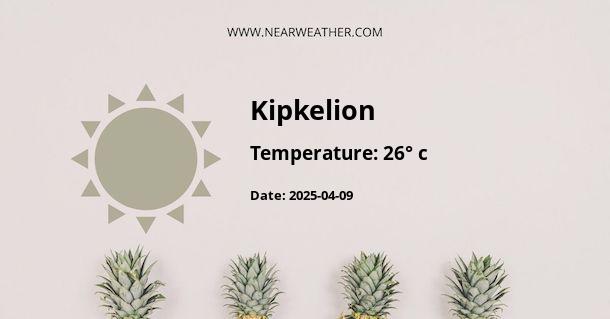Climate and Weather in Lumbwa, Kenya
Lumbwa, Kenya is a small town situated in the Rift Valley Province, offering a unique and enchanting blend of diverse climatic conditions. The weather in Lumbwa is predominantly tropical, characterized by significant variations in temperature and rainfall throughout the year. This article will explore the climate and weather patterns in Lumbwa in detail, providing an in-depth look at the different seasons, temperature variations, and rainfall patterns.
Annual Temperature in Lumbwa
Due to its equatorial location, Lumbwa experiences a tropical climate with relatively stable temperatures throughout the year. The annual mean temperature in Lumbwa is approximately 20.5°C (68.9°F).
The warmest month is typically February, with an average high temperature of 28°C (82.4°F), while the coldest month is usually July, with an average low temperature of 13°C (55.4°F).
The hottest periods are often experienced between January and March, while the coldest periods occur between June and August. During these colder months, the temperature can drop significantly at night, so it's advisable to pack a jacket if you're planning a visit during this period.
Rainfall in Lumbwa
Rainfall in Lumbwa is influenced by the town's location in the equatorial region. It experiences two rainy seasons in a year, the long rains occur between March and May, and the short rains between October and November.
On average, Lumbwa receives about 900-1000mm of rainfall annually, the highest rainfall typically occurs in April, while the lowest is usually in July.
It's worth noting that these rainfall patterns can vary from year to year, largely due to global climate phenomena such as El Niño and La Niña.
Humidity in Lumbwa
Lumbwa's tropical climate also means that the town experiences high humidity levels throughout the year. The average annual relative humidity is around 75%, with the highest levels often recorded during the rainy seasons.
Wind in Lumbwa
The wind in Lumbwa generally blows from the southeast, with an average speed of about 10 km/h. The windiest month is usually February, and the calmest month tends to be in November.
Climate Change Impact on Lumbwa
Like many other regions across the globe, Lumbwa is not immune to the impacts of climate change. Changes in temperature patterns and rainfall distribution have been recorded, leading to increased climate variability and unpredictability.
Research indicates that annual temperatures in Lumbwa have been on a steady rise over the past few decades, contributing to longer periods of heat and shorter cold seasons. This has significant implications for the town's agriculture, which heavily depends on predictable weather patterns.
Conclusion
In conclusion, Lumbwa's climate is characterized by a tropical climate with significant rainfall throughout the year, but with a drier period from June to August. The town's weather patterns are influenced by its location near the equator, with relatively stable temperatures and two annual rainy seasons.
However, climate change poses a growing challenge to Lumbwa's weather patterns, with rising temperatures and unpredictable rainfall distribution threatening the town's agricultural practices. As such, it underscores the need for climate resilience strategies to safeguard the town's future.
A - Kipkelion's Latitude is -0.196750 & Longitude is 35.468472.
A - Weather in Kipkelion is 19° today.
A - Climate Conditions in Kipkelion shows light rain today.
A - Humidity in Kipkelion is 79% today.
A - Wind speed in Kipkelion is 4.36 km/h, flowing at 17° wind direction. today.
